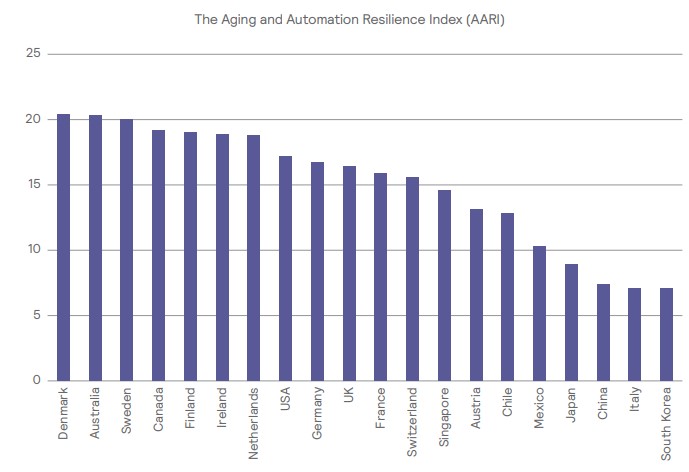The Ageing and Automation Resilience Index 2019
Governments and organisations of all sizes are grappling with unprecedented rates of disruption as Industry 4.0 unfolds. New technologies and capabilities have spawned new industries, markets, and economies, laying waste to traditional ones. Low-skilled, routine jobs are increasingly at risk of automation – jobs that older workers aged 50 and over are often employed in.
At a time when populations around the world are ageing and working-age populations are shrinking, how prepared are countries around the world for the threats of societal ageing and workplace automation?
The Ageing and Automation Resilience Index analyses the mitigating factors a country has in place to tackle the challenges of ageing and job automation among older workers, as well as the strength of their local retirement system, to assess a country’s preparedness to manage ageing and automation.
Of 20 major global economies, Asian countries are among the least prepared to combat the threats of societal ageing and workplace automation. South Korea (20) ranks at the bottom of the list, with China (18) and Japan (17) not far behind. Of the four Asian countries included in the Ageing and Automation Resilience Index (AARI), Singapore (13) ranks the highest. Denmark (1), Australia (2) and Sweden (3) are the most resilient countries to ageing and automation challenges.

The report’s results were based on several factors, including:
- Older workers (those aged 50+) in China are doing work where, on average, more than three-quarters (76 per cent) of all tasks are automatable.
- The difference in average risk of automation between old and young workers is largest in Singapore.
- Against an average of 66.2 per cent, Japan has a strong labor workforce participation rate at 75.4 per cent, while China’s rate for this cohort is 59.1 per cent.
- China (21.5 per cent), Japan (23.5 per cent), South Korea (31.7 per cent) and Singapore (26.8 per cent) have a very high labor workforce participation rate for those aged 65+ in comparison to the average (14.7 per cent).
- Against the average of 51.9 per cent, China (1.5 per cent), Japan (28.6 per cent), South Korea (10.9 per cent) and Singapore (31.2 per cent), have very low assets in pension funds as a percentage of their GDP.





